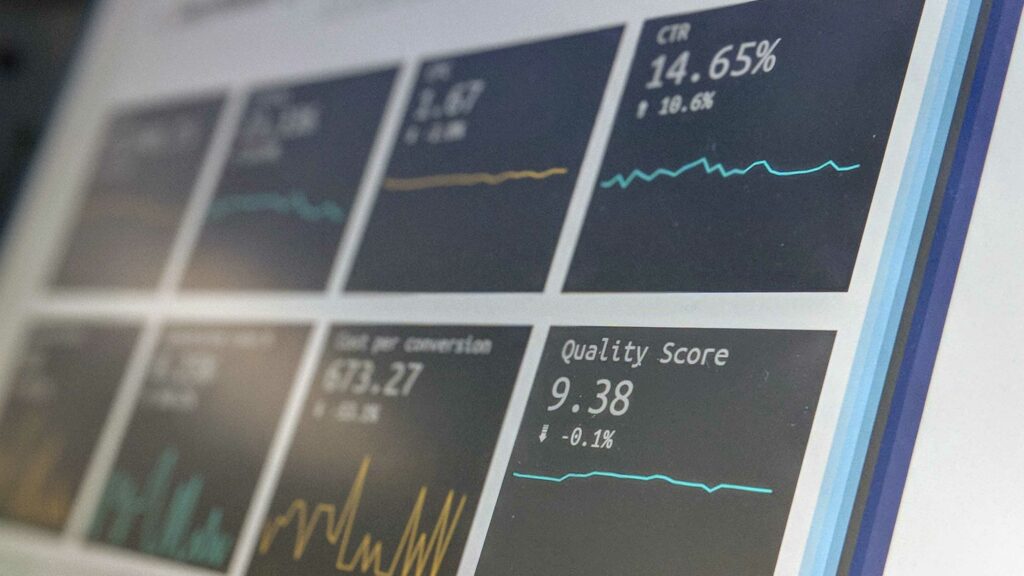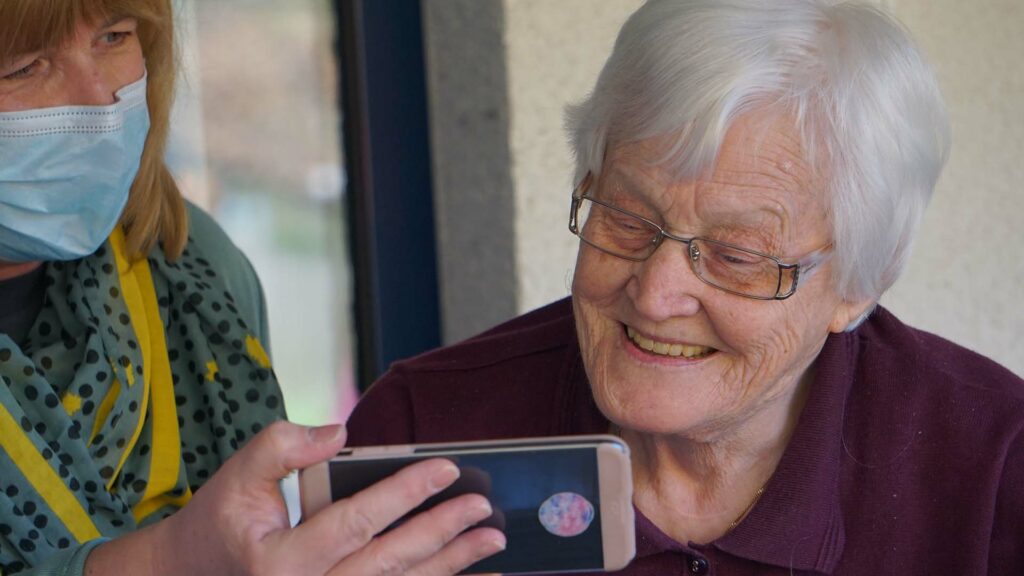The year 2020 was a true test for all of us, of our adaptability and resilience. 2021 brings cautious optimism and hope of speedy recovery of our economies, in which technology will be the key player. Let’s find out what Avenga Labs predicts for the year to come in business and technology.
Resilience due to adaptability
Year 2020 was a big test for every organization in how to survive and thrive during sudden drops in demand, increased instability and volatile economies.
The EU economy is forecasted to contract by 8.3% in 2020 and grow by 5.8% in 2021 according to European Commision. Minus 4.3% is expected to be the growth in the United States according to the International Monetary Fund.
The old methods of management proved to be utterly ineffective and dangerous to the very existence of the organizations. Broken supply chains, zero warehouses, and just-in-time, along with many of the 1990s best management mantras proved to be a nail in the coffin for many organizations. Now it’s time for something different.
Resilience means the end of absurd cost optimizations, especially when operating cost was the main, and sometimes, only goal. The lessons learned will motivate organizations to also include resilience as a critical optimization goal.
Adaptability was the main strategic trend for 2020 and it was the key for resilience. And, nothing changes in this regard in 2021. What I really mean is expect changes and adapt quickly!
Time-space compression and hyper automation
The world has become less physical for many of us. Travel was replaced by teleconferences and personal visits to different places were replaced by digital experiences. Thousands of kilometers away become a couple of milliseconds away.
Things that took years are done in weeks or even days; for instance, remote work of entire organizations.
Today, more than 515 million people use Microsoft Teams, Zoom or Google Meet every day (according to Microsoft, Zoom and Google). And the numbers are growing.
→ Discover why To change or to pretend a change – that is the question
The year 2021 is not expected to be a year of relaxation after the unexpected 2020 year, but actually it will be the year of hard and efficient work in order to recover and rebuild. Nothing is going to get slower.
Hyper automation is part of this efficiency trend. It used to be ‘can it be automated?’ but now it’s ‘let’s do it automatically’; at least an attempt to do so. The rising popularity of low code platforms, as well as RPA, are the practical consequences of this strategic technology trend.
According to Spiceworks Ziff Davis report, 80% of the businesses are planning to increase or keep the same IT budgets for 2021, 44% plan to accelerate their digital transformation plans.
Travel for business will be back but in many cases people have learned that it’s simply not necessary. Survey from the Institute of Travel Management shows further drops from just 25% down to 70% in 2021.
Hybrid work
Nobody knows exactly what the return back to the offices is going to look like. The most difficult question is ‘when’. The ‘how’ is easier to predict. The offices will become more like shared coworking spaces and remote work, in some capacity, will stay forever.
Distributed teams are here to stay indefinitely, there’s no going back to the old ways. New family of tools enables both asynchronous and real time collaboration.
This includes office workers, support teams, doctors, but also software developers. Tools like Visual Studio Online and GitHub Codespaces enable close collaboration including pair coding at the same time at the same line of code. This includes even coffee meetings which were turned into virtual coffee meetings.
Now, we know very well which remote work models are effective. Because of the big experiment in 2020, individual people know which model works the best for them and the same applies to organizations; which roles are easier to perform remotely and which are not.
Number of regular home workers is to increase from 17% to 37% post pandemic (survey by BBC).
Mixed hybrid models rule 2021 as part of the mega strategic trends of adaptability and resilience.
From cooperation back to competition?
To save entire sectors, cooperation between competitors may be the best way for every player.
We saw this in the pharmaceutical and health sector when different companies shared their observations, data and test results. Large online wikis and shared datasets replaced the utmost secrecy of the recent past, and data companies contributed to shared data science projects.
→ Discover Avenga Security-first system for COVID-19 test results in the blockchain
In order to find better treatments, measures of the efficiency of experimental therapies, and the building of better pandemic models, lots of sharing has happened like never before.
In the retail sector, those who had established e-commerce platforms and were already prepared for an online only model, helped other companies by selling their products using their own platforms. Something that was unlikely is now a viable option and will remain as such.
The year 2021 will mean coming back to the traditional competition. However, lessons learned and some sharing practices from 2020 will stay in play as they have proven to be helpful across entire sectors.
Data and AI – better and faster

Many data models failed in 2020, as they proved to not be resilient and were simply useless when the entire economy was shaken by the lockdowns. It was eye opening to many as the hype around big data was so loud that they mistakenly expected miraculous results.
Accuracy of the models decreased from normal and acceptable >90% percent to unacceptable 60% (as an example, Instacard grocery store).
The painful lessons learned about the volatility of the models only made data science technologies and skills better. The year 2020 also exposed us even more to the eternal problem of data quality. Many called data the fuel for digital transformation, but now even more have experienced how important the quality of data is.
→Explore Data Governance: What for, Why and How?
In disruptive times, real time data analysis, testing fast multiple hypotheses, and well everything has to be done quicker and in parallel when testing different model variants. The pressure for data science teams to embrace continuous delivery (CD) and similar practices will only grow.
Faster and more frequent training and error corrections are the key remedies for changing ML (machine learning) models in turbulent environments.
The importance of properly done data management, data quality and analytics will grow as well in 2021.
Scalability as an important factor of IT resilience
There are different economy recovery models for entire economies, sectors and specific organizations.
The truth is, their probability is low despite improvements in big data analytics and machine learning (ML). The volatility and unpredictability is simply just too high.
In the first half of the year 2020, consumers spent 30.1% more online than for the same period in 2019 (source: Digital Commerce 360 analysis of the U.S. Department of Commerce). Amazon sales in North America soared 39% in 2020.
On the other hand the orders for flight tickets dropped by 68.6% in spring 2020 then recovered to -48.8% (compared to January 2020). It shows how rapid the changes are in demand during market instability.
So, IT has to be prepared for a sudden drop in demand as well as for a sudden spike of digital customer activity. In times of recovery, nobody wants to overpay for the infrastructure nor to lose their customers for performance and security reasons.
→ How to dramatically improve your web app performance and security in one hour
Of course, I am relating directly to cloud computing including public clouds, hybrid clouds, microservices and serverless which all, when designed and implemented properly, are a great help to scalability.
The ability to scale up and down is definitely a strong strategic technology trend for 2021.
Values
The year 2020 was a perfect year to prove what values the organization actually represented. It was an ultimate test.
We are moving away from the ‘work-life balance’ models of the past and embracing work as an integral part of our lives. Sometimes it is hard to separate the two and they influence each other even stronger than we would like, creating tension and discomfort for many.
The expectancy of leaders to understand and empathize with their employees is even greater now and is not going anywhere in 2021.
Many organizations helped people to work remotely as well as how to deal with stress and anxiety. Remote mindfulness sessions and other helpful activities were embraced by many more people than before and the trend will continue.
The well being of employees is both beneficial for organizations, as they are more efficient and motivated, as well as ethical.
The year 2021 will be a year in which the economy is expected to recover. This will be a time when employees will remember how their organizations behaved during the harsh times and will react according to that. The same applies for business relationships between partners and clients. The loyalty and trust based on the values that were built in 2020 will pay off in 2021.
Digital consumers means all consumers
We lived in a world of technology prejudices and preconceptions.
Now, virtually all patients use electronic receipts, buy things online, and enjoy digital connectivity with their closest friends and family.
It’s time to bury the old school prejudices and other unfair divisions and make user experiences great for everyone.
→ Discover Avenga Business and Customer Experience Strategy
Necessity is the mother of invention, but it’s also a reason to change habits and behaviors.
Many people found out that web applications and mobile apps are easy to learn and use, and it opened the door to an entire digital world.
Young children were perfectly capable of learning remotely using Teams or Zoom.
With over half a billion people attending visual conferences every day, we do live in an entirely different, significantly more digital world than at the beginning of 2020.
In 2021, we will observe even more of a common understanding that all customers are digital customers. More people will be invited in to experience the benefits of digitalization.
Connectivity and communication
Year 2020 meant big improvements in digital connectivity and communication.
The average international internet traffic increased 48% (source: Global Internet Geography).
Sales of fiber connections spiked as well as laptops and other devices for working remotely.
There were even moments when stores ran out of internet cameras and microphones.
Cloud computing service providers had to upgrade their infrastructures as well as most other organizations.
Year 2021 will benefit from the improvements made in 2020 and this is one of the best consequences of the connectivity shock of the pandemic.
It’s not only infrastructure that evolved, but also the habits and practices that started from the basics, like knowing how to mute microphones in different teleconferencing applications, how to set up a camera properly and how to blur the background.
It also applies to the API world and automated processes crossing the boundaries of organizations and countries.
5G will become a viable option for more and more people and businesses, and 2021 is considered to be the real beginning of the massive adoption of this technology.
Avenga
Avenga has proved itself to be a very flexible and efficient partner with a deep understanding of what is happening across the markets. As projects crossed multiple business domains and technologies, our broad competences and experiences shined through the pandemic fog.
→Explore Security-first system for COVID-19 test results in the blockchain
Our open mindset allowed us to react quickly to the crisis and adapt ourselves to the new reality. We also proved our adaptability in the situations in which our partners experienced and are continuing to experience. Quick changes in priority are the true test for IT partners, such as Avenga. We were not looking for this kind of challenge, nobody was, but it helped us to prove ourselves and made us even more efficient as well as better prepared for the future.
We hope 2021 will be the year of recovery, which means even faster digitalization waves in the future.


















